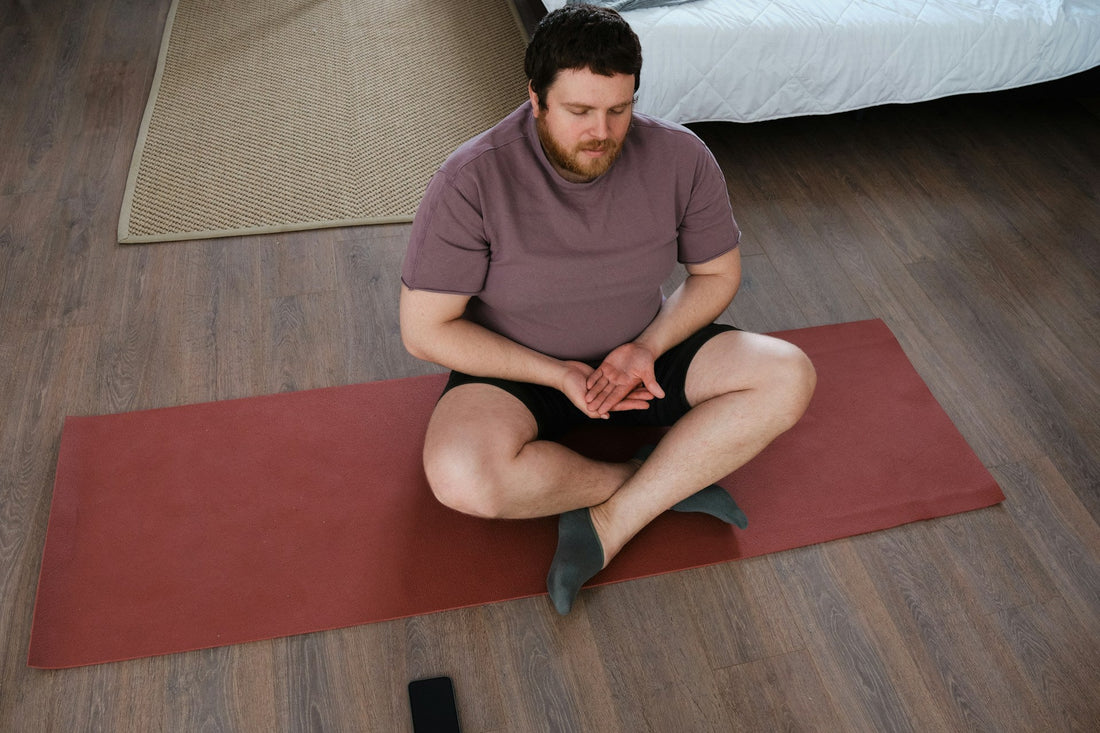
Do Kegel Exercises Help Hemorrhoids? Understanding the Benefits and Techniques
Share
Kegel exercises are often recommended for a variety of pelvic health issues, but you might wonder if they can help with hemorrhoids. The answer is yes; Kegel exercises can indeed provide relief by strengthening the pelvic floor muscles and improving circulation in the affected area. This improvement in muscle tone and blood flow can alleviate some discomfort associated with hemorrhoids and may help prevent their recurrence.
Incorporating Kegel exercises into your routine is straightforward and can be done discreetly. Not only do these exercises target the pelvic floor muscles, but they also promote better bowel control, reducing strain during bowel movements – a common trigger for hemorrhoid flare-ups. For those seeking additional support, Hem Healer offers a 100% natural blend of botanical herbs designed to reduce pain and swelling associated with hemorrhoids, making it a valuable complement to your exercise regime.
By focusing on both exercises and natural supplements, you can take proactive steps towards better pelvic health and manage the symptoms of hemorrhoids effectively. Engaging in Kegel exercises regularly may not only improve your overall pelvic floor strength but also enhance your quality of life.
Understanding Hemorrhoids
Hemorrhoids are a common condition marked by swollen veins in the anal area. They can be classified into two types: internal and external. Understanding their causes, risk factors, symptoms, and diagnosis is crucial for effective management.
Causes and Risk Factors
Hemorrhoids develop due to increased pressure in the rectal area, leading to swollen veins. Several factors contribute to this condition, including:
- Pregnancy: The growing uterus puts pressure on the pelvic veins.
- Obesity: Excess weight can heighten abdominal pressure.
- Prolonged sitting: Sitting for extended periods increases vein pressure in the anal area.
Other causes include chronic straining during bowel movements and constipation. Poor dietary habits, like low fiber intake, can exacerbate these issues, making hemorrhoids more likely.
Symptoms and Diagnosis
Common symptoms of hemorrhoids include:
- Painless rectal bleeding: Bright red blood during bowel movements.
- Discomfort or itching: Particularly around the anal area.
- Swelling: Around the anus, which could indicate external hemorrhoids.
To diagnose hemorrhoids, a healthcare provider may perform a physical examination. They might also use visual inspection and, in some cases, perform a digital rectal exam to assess any internal hemorrhoids. Early identification can facilitate effective treatment, such as incorporating supplements like Hem Healer, which offer a natural approach to reducing pain, swelling, and bleeding.
The Benefits of Kegel Exercises for Hemorrhoids
Kegel exercises can significantly enhance your pelvic floor strength, leading to improved circulation and relief from discomfort associated with hemorrhoids. By focusing on specific muscle contractions, you can aid in the prevention and management of this condition.
Improving Blood Flow
Kegel exercises strengthen the pelvic floor muscles, which can enhance blood flow to the anal area. Improved circulation is crucial for reducing the risk of hemorrhoids, as it helps maintain healthy tissue.
When you perform pelvic floor contractions, you stimulate the blood vessels, which can lead to better nutrient delivery and waste removal. This process helps in reducing congestion in the area, which may contribute to the formation of hemorrhoids.
Regular practice of Kegel exercises can promote overall pelvic health. This not only aids in preventing hemorrhoids but also supports recovery from existing conditions. Consistency is key to maximizing these benefits.
Reducing Swelling and Discomfort
Incorporating Kegel exercises into your routine can help alleviate the swelling and discomfort often associated with hemorrhoids. By toning the pelvic floor muscles, you reduce pressure on the anal veins, helping to minimize inflammation.
Strengthening these muscles also provides better support for the rectal area. This improved support may lead to a decrease in discomfort during bowel movements, making the process smoother and less painful.
Consider integrating Kegel exercises with a natural supplement like Hem Healer, which combines botanical herbs to address pain, swelling, and bleeding. This holistic approach can provide enhanced relief from hemorrhoids for both men and women.
You can experience a notable difference in your symptoms by focusing on Kegel exercises alongside appropriate supplementation.
Performing Kegel Exercises Correctly
To effectively incorporate Kegel exercises into your routine for managing hemorrhoids, it's essential to understand the correct technique and identify the proper muscles. A consistent routine paired with alternative pelvic floor exercises can enhance your results.
Identifying the Right Muscles
To perform Kegel exercises, you must first identify the pelvic floor muscles. These are the same muscles used to stop urination midstream. To locate them, try urinating and see which muscles you engage to halt the flow. Be aware not to use your abdominal, buttock, or thigh muscles. Once identified, practice contracting these muscles, ensuring that you can isolate the pelvic floor without engaging other muscle groups. This awareness is crucial for more effective exercises.
Kegel Exercise Technique
Kegel exercises involve rhythmic contractions of the pelvic floor muscles. Start by squeezing these muscles for about five seconds, then relax for another five. Gradually increase the duration of each contraction to ten seconds as your strength improves. Aim for three sets of ten repetitions daily. To maximize benefits, ensure your breathing remains steady and avoid holding your breath. Focusing on relaxation during the recovery phase is equally important, allowing your pelvic floor to recuperate.
Recommended Routine
For best results, incorporate Kegel exercises into your daily routine. Choose times when you can focus, such as while sitting at your desk or lying on the floor. Consistency is key, so set reminders to perform your routine at least three times a day. If you're comfortable, you can also try Kegel exercises while performing other activities, such as watching TV or doing household chores. Combine these exercises with a proper diet and hydration to support overall health. For additional support, consider using supplements like those offered by Hem Healer, which are designed to alleviate the symptoms of hemorrhoids.
Alternative Pelvic Floor Exercises
You can enhance the benefits of Kegels by incorporating other pelvic floor exercises. Poses such as child’s pose and bound angle pose promote relaxation and stretch the pelvic region. Legs up-the-wall pose aids in improving circulation, which can be beneficial for hemorrhoid relief. The wind-relieving pose not only helps with digestive issues but also engages the core and pelvic muscles. These exercises can complement your Kegel routine and may improve overall pelvic health. Regular practice of these poses can enhance your comfort, especially if you experience pelvic tension.
Lifestyle Changes and Other Remedies
Making targeted lifestyle changes can greatly assist in managing hemorrhoids. Adjustments to your diet, regular physical activity, and effective pain management strategies can play a crucial role in your recovery.
Dietary Considerations
A diet high in fiber is essential for preventing and alleviating hemorrhoids. Fiber helps soften stools and promotes regular bowel movements, reducing straining during defecation. Aim for at least 25 to 30 grams of fiber daily, incorporating foods like fruits, vegetables, whole grains, and legumes. Staying hydrated is also important; drink plenty of water throughout the day.
If you experience constipation, consider gradually increasing your fiber intake to avoid gastrointestinal discomfort. Additional dietary adjustments may include reducing processed foods and spicy items, which can irritate the digestive tract. For those seeking extra support, Hem Healer offers a 100% natural blend of botanical herbs, designed to reduce pain and swelling effectively.
Regular Exercise and Physical Activity
Engaging in regular, low-impact exercises can benefit your overall health and specifically help with hemorrhoid management. Activities such as walking, swimming, or yoga improve circulation and can alleviate pressure on the rectal area. Aim for at least 30 minutes of aerobic exercise most days of the week.
Avoid prolonged sitting or standing, as this posture can worsen symptoms. Incorporating pelvic floor exercises, such as Kegels, can also strengthen the muscles and prevent further complications. Remember that consistency in your physical activity routine is key to experiencing lasting benefits.
Managing Pain and Recovery
To manage pain effectively, consider using over-the-counter pain relievers, such as ibuprofen or acetaminophen, which can alleviate discomfort during flare-ups. Additionally, topical treatments like creams can provide localized relief and reduce inflammation.
Engaging in warm baths may also help soothe the area and promote relaxation. Pay attention to your bowel habits; do not rush during bowel movements and heed your body’s signals. Maintaining good hygiene is critical as well. For those seeking a natural supplement approach, Hem Healer can enhance your recovery by targeting symptoms and improving overall well-being.
Exercises and Activities to Avoid
When dealing with hemorrhoids, it's essential to identify exercises and activities that could exacerbate symptoms. Avoiding certain high-pressure workouts and activities that create strain can significantly help manage discomfort and promote healing.
High-Pressure Workouts
High-impact exercises can place undue strain on your abdominal and pelvic areas. Activities like weightlifting and rowing should be approached with caution. These workouts often involve intense abdominal pressure, which may worsen your hemorrhoid symptoms.
Cycling can also be problematic due to the pressure it places on the perineal area. If you're a regular cyclist, consider adjusting your seat position or taking breaks to relieve pressure.
Additionally, squats can increase intra-abdominal pressure. While they strengthen your legs, it's best to limit such exercises to prevent worsening your condition. Opt for gentler workouts that don't place significant strain on your pelvic region.
Activities That May Worsen Symptoms
Some everyday activities can contribute to hemorrhoid discomfort. Horseback riding can lead to pressure in the anal area, potentially aggravating your symptoms. If you enjoy this activity, find ways to modify your approach or limit ride duration.
Furthermore, engaging in exercises like sit-ups can place excessive strain on your core, which can increase discomfort. It's vital to focus on activities that promote gentle movement without creating added pressure.
To support your recovery, consider using Hem Healer. Its 100% natural blend of botanical herbs aids in reducing pain, swelling, and bleeding associated with hemorrhoids, making it highly effective for both men and women. Prioritizing low-impact movements while complementing your routine with Hem Healer can enhance your healing process.

